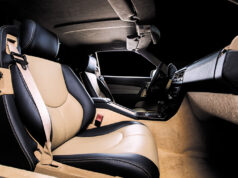Central Luzon showed an impressive progress in recent years, fueled by the robust growth of the region’s emerging cities and special economic zones. Among the biggest contributor to this growth is the Clark Freeport Zone, which is considered to be the next economic haven of Luzon.
In President Rodrigo R. Duterte’s speech during the Kapampangan Food Festival last December, he emphasized that Clark is now a very important destination in the Philippines. In fact, it became the entry point of most of the Association for Southeast Asian Nations (ASEAN) leaders during the summit last year. The zone has become the government’s next target for development and is believed to be the catch basin of the overflowing vibrancy of Metro Manila.
From a mere American military airbase, the Clark Freeport Zone is now poised to become an airport-driven urban center that stands at the crossroads of big socioeconomic opportunities. It is managed today by Clark Development Corporation (CDC), with a vision of transforming the zone into a modern industrial estate and premier service and logistics hub by 2020.
For the last five years, the Clark Freeport Zone posted a stellar growth in terms of revenues, net income and cash position. As noted in CDC’s annual report in 2016, Clark recorded a gross revenue of P1.64 billion, 6% higher than the 2015 revenue of P1.55 billion. From 2013 to 2016, Clark’s average revenue per year amounted to P1.45 billion, more than twice the average for the years 1996 to 2012 of P0.62 billion.
CDC remitted to the national government a total of P700-million cash dividends in 2016, the highest single-year remittance so far. In total, CDC paid cash dividends worth P2.05 billion, of which P1.42 billion or 69% represent the dividend years 2012 to 2015. Considering these figures alone, the Clark Freeport Zone is undoubtedly a big contributor not just to the growth of its region, but also to the entire country.
There are many reasons why Clark Freeport Zone has gained competitive advantages over the other growing economic hubs.
Located about 60 kilometers northwest of Metro Manila, it can be easily accessed through the North Luzon Expressway (NLEx) and Subic-Clark-Tarlac Expressway (SCTEx). It is also within the major growth corridor of Asia, with a calculated flight time of between one and a half hour to four hours from and to other major Asian countries such as Taiwan, Hong Kong, Macau, Malaysia and Singapore.
Aside from its strategic location, Clark Freeport Zone is an ideal investment spot due to its generous fiscal and non-fiscal incentives. Within the zone, a preferential tax rate of 5% based on gross income earned, and tax and duty-free importation of raw materials and capital equipment are applied. Also, investors together with their spouses and dependent children under 21 years old can have a permanent residency status, provided they have continuing investments of not less than $250,000.
Generally, the Clark Freeport Zone is adopting a master plan guiding the balanced development of areas considered apt for high-end industrial and IT enabled industries; tourism investment that includes retirement villages and medical tourism facilities; aviation and logistics-related enterprises; and commercial activities aligned with the central business district concept.
The number of new locators, which have become attracted to Clark’s investment climate, increased by 6% in 2016. The growth, according to the CDC annual report, is attributable to the entry of businesses engaged in commercial (32%), information and communications technology (24%) and service (23%) sectors mostly under subleasing agreements. New locators belonging to other sectors complementary to the work-live-play business environment of Clark also grew in number: industrial (12%); tourism (4%); institutional (2%) and logistics (1%). As a result, a remarkable 11.8% increase in new jobs was attained.
CDC is continuously receiving several inbound investment missions by prospective investors from several countries including Taiwan, Ethiopia, France, Pakistan, Brunei, Japan, Malaysia, Singapore and US. In 2016, the total of walk-in guests surged to 693, according to its annual report.
Meanwhile, the trade performance of Clark in 2016 — both imports and exports — declined by 8.6% (from total importation of $3.55 billion in 2015) and 25.04% (from total exportation of $4.43 billion in 2015), respectively. Despite this, several Clark locators still posted remarkable export volumes in the same year. — Mark Louis F. Ferrolino



